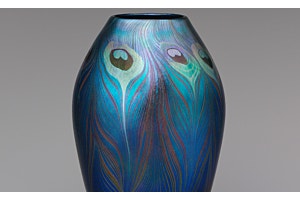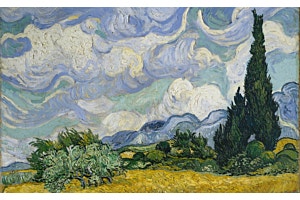
The incomparable Michelangelo Merisi da Caravaggio (Italian, 1571–1610) is among the most revolutionary figures in the European history of art. His practice of painting directly from posed models defied the idealizing premise of Renaissance theory, and yet the unflinching realism with which he painted was remarkably well suited to his time.
Caravaggio depicted holy subject matters with divine skill and contemporary grit alike. In transforming local beggars and servants into saints and deities—many of whom maintained hints of their earthly status in the way of dirt on the soles of their feet and beneath their fingernails—his paintings fostered a masterful balance between the fanciful nature of art and the actuality of life.
The Musicians (1597), a highlight of The Met’s European Paintings collection, exemplifies that equilibrium.


Gathered into this tight composition are four figures in classicizing robes. On the far left is Cupid, the winged god of love from Roman mythology, who holds a bunch of grapes in his hands. His presence indicates that this scene is an allegory conveying the message that music, like food, is a form of sustenance and love.


But The Musicians also references life in late 16th-century Rome. Caravaggio had only recently arrived in the city from northern Italy in the early 1590s when he painted it, and like many other artists hoping to emerge from the shadows of Renaissance giants such as Michelangelo (Italian, 1475–1564) and Raphael (Italian, 1483–1520), he worked as an assistant to other artists and even an art dealer. It wasn’t long before his own art, so unique from that of his peers, caught the discerning eye of the cardinal and connoisseur Francesco Maria del Monte. At the time, concerts such as the one portrayed by Caravaggio—down to the performers wearing classical costumes—were privileged pastimes that may well have taken place in the wealthy cardinal's home. Lending another layer of realism to the painting is the artist's self-portrait in the second figure from the right.


Our tee celebrates this significant painting commissioned by the cardinal, who became Caravaggio’s first major patron and promoter of his work.


Caravaggio went on to achieve renown for his high-contrast—or chiaroscuro—paintings that wield light and shadow to amplify the intensity of his subject, and by all accounts, he lived his life with the same drama that animated his art. Caravaggio was the most famous painter in Italy when, in 1606, he fled Rome to Naples after a fatal altercation led to a warrant for his execution. He worked vigorously and rapidly after the event, producing dark, expressive imagery unlike anything Europe had ever seen.
A mysterious attack on the artist in Naples and his early death of fever on the coast near Porto Ercole are likewise compelling incidents that have seduced storytellers through the centuries, and to this day, no other Old Master has been the subject of so many novelistic biographies.


The Met houses two paintings by Caravaggio—The Musicians (1597), representing the beginning of his career, and The Denial of Saint Peter (1610), made the same year of the artist’s death—making it possible to appreciate the span of his contribution to western art.
Shop the Caravaggio The Musicians Tee and other apparel inspired by artworks in The Met collection in-store and online.





